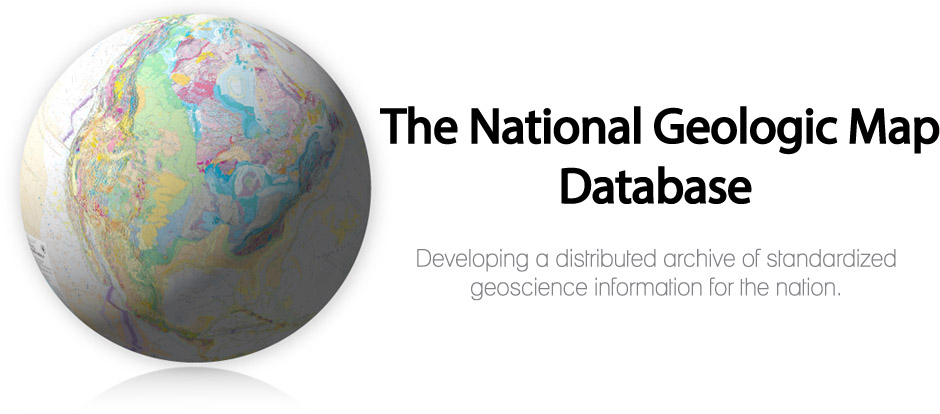Filters: Tags: Paleontology (X) > Date Range: {"choice":"year"} (X)
8 results (21ms)|
Filters
Date Types (for Date Range)
Contacts
Categories Tag Types
|
In areas of low uplift rate on the Pacific Coast of North America, reoccupation of emergent marine terraces by later high-sea stands has been hypothesized to explain the existence of thermally anomalous faunas (mixtures of warm and cool species) of last interglacial age. If uplift rates have been low for much of the Quaternary, it follows that higher (older) terraces should also show evidence of reoccupation. Strontium isotope analyses of fossils from a high-elevation marine terrace on Anacapa Island, California yield a suite of ages ranging from ~2.4-2.3 Ma to ~1.4-1.5 Ma. These results indicate that terrace reoccupation and fossil mixing on Anacapa Island could have taken place over several interglacial periods...
Categories: Data;
Tags: Anacapa Island,
California,
Channel Islands National Park,
Climatology,
Geochemistry,

The National Geologic Map Database (NGMDB) is a Congressionally mandated national archive of geoscience maps, reports, and stratigraphic information. The Geologic Mapping Act of 1992 and its Reauthorizations calls for the U.S. Geological Survey and the Association of American State Geologists (AASG) to cooperatively build this national archive, according to technical and scientific standards whose development is coordinated by the NGMDB. The NGMDB consists of a comprehensive set of publication citations, stratigraphic nomenclature, downloadable content in raster and vector formats, unpublished source information, and guidance on standards development. The NGMDB contains information on more than 110,000 maps and...
This collection consists of Western Interior Upper Cretaceous ammonites and Inoceramids fossils with stratigraphic and spatial data largely from the Rocky Mountain region of North America. Data is primarily type fossils from the USGS Denver Mesozoic Invertebrate Catalog created and maintained by U.S. Geological Survey (USGS) that as of March 2020 has been transferred to the Smithsonian National Museum of Natural History. Samples collected by paleontologist William A. Cobban during his sixty years of service within the USGS Paleontology And Stratigraphy Branch and Geologic Mapping Team. Approximately 14,595 fossil localities are represented in this collection. In a career that spanned almost 75 years, Cobban fundamentally...
Categories: Collection,
Data;
Types: Map Service,
OGC WFS Layer,
OGC WMS Layer,
OGC WMS Service;
Tags: Campanian,
Cenomanian,
Collection,
Coniacian,
Cretaceous,
The original compilation of this data is in Rau (2004) (https://www.dnr.wa.gov/Publications/ger_dr4_pacific_nw_foram_collections.zip), where most samples are located by Township, Range, and Section relative to the Public Land Survey System. For this database, Snavely's original field sheets and notebooks were used to calculate latitude and longitude of the samples and the results were combined with Rau (2004) to produce a geodatabase in ArcGIS. Latitude and longitude are reported in the North American Datum of 1927, however the point feature class has been reprojected to the North American Datum of 1983 UTM zone 10N. The database includes information on 3,418 foraminiferal samples mostly gathered from outcrops during...
Categories: Data;
Tags: Marine Geology,
Oregon,
Strait of Juan de Fuca,
Stratigraphy,
USGS Science Data Catalog (SDC),
The Denver fossil algae database were gathered from the inception of Denver Region in 1953 by Richard Rezak. His specialty was algae, carbonate platforms, and off-shore modern reefs. He developed a very useful litho-stratigraphic tool while studying Proterozoic algae and stromatolites in Glacier National Park. This lead to his studies of modern analogs in the Caribbean and South Seas. This collection contains 1001 fossil localities. This collection was originally created and maintained by U.S. Geological Survey (USGS) and as of March 2020 has been transferred to the Smithsonian National Museum of Natural History.
Categories: Collection,
Data;
Types: Map Service,
OGC WFS Layer,
OGC WMS Layer,
OGC WMS Service;
Tags: Africa,
Asia,
Collection,
Europe,
Glacier National Park,
This collection consist of vertebrate fossils from North America featuring stratigraphic and spatial data. Data is primarily type fossils from the USGS Denver vertebrate Catalog created and maintained by U.S. Geological Survey (USGS). Data were collected by paleontologist Dr. G. Edward Lewis during his years of service within the USGS Paleontology and Stratigraphy Branch. His catalogs contain 1122 fossil localities. Collection was originally created and maintained by U.S. Geological Survey (USGS) and as of March 2020 has been transferred to the Smithsonian National Museum of Natural History.
Since 2002, the Woods Hole Coastal and Marine Science Center’s Samples Repository supports research by providing secure storage for geological, biological, and geochemical samples; maintaining organization and an active inventory of these sample collections; and providing access to these collections for study and reuse.This collections inventory has been compiled, organized, and released as a searchable database to provide researchers and the general public with means to discover and request scientific sample material preserved and maintained by the Woods Hole Coastal and Marine Science Center Samples Repository. Updates are made to the inventory as the collections grow, and version history information is available...
Categories: Collection,
Data;
Tags: Arctic Ocean,
Atlantic Continental Margin,
Atlantic Ocean,
Blake Plateau,
Buzzards Bay,
Variability in sediment properties with depth and the thickness of individual sedimentary layers are critical determinants of seabed acoustic response. The New England Mud Patch (NEMP), located south of Cape Cod, is an unusual feature on the U.S. Continental Shelf in that it is composed of fine-grained sediment layers containing a relatively-homogeneous mix of sand, silt, and clay-sized particles bounded by more typical sandy shelf sediments. The unique characteristics and nature of this deposit is due to a derivation of sediments that have been transported to, and deposited in, a basal bowl-shaped depression since the last glacial maximum. Ninety-two piston, vibra-, and gravity cores with a maximum length of 8.2...
|

|